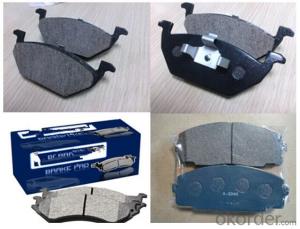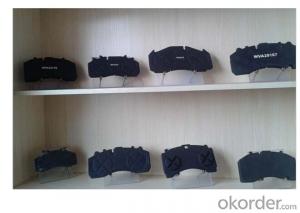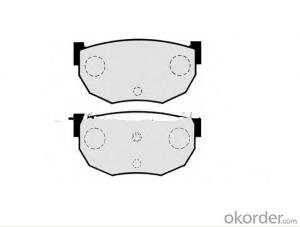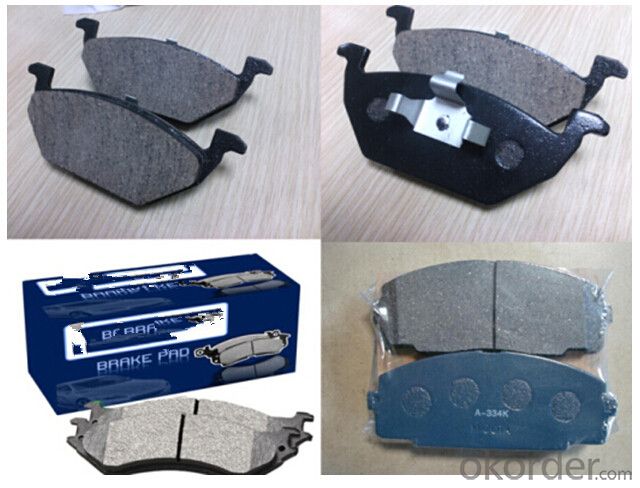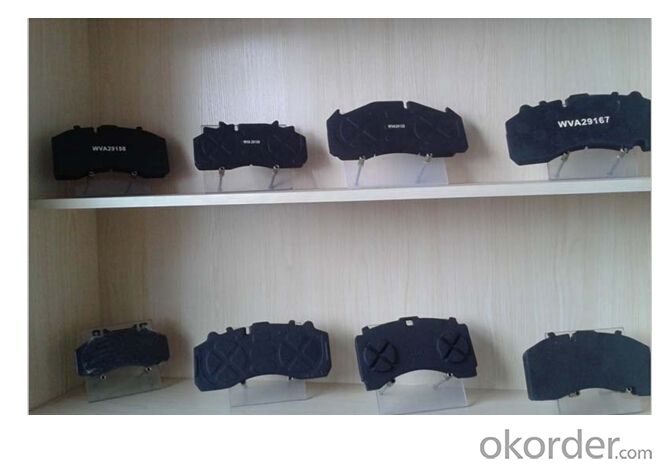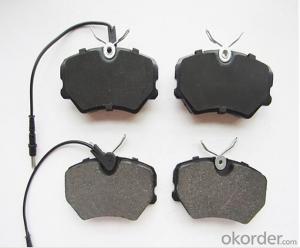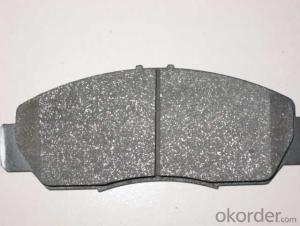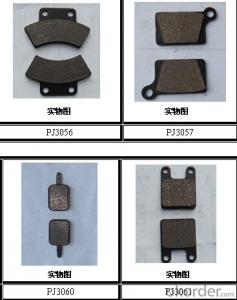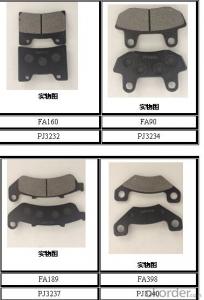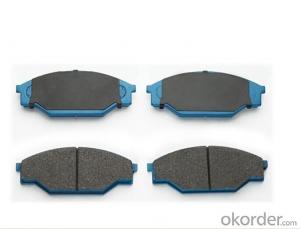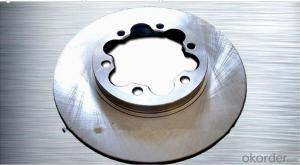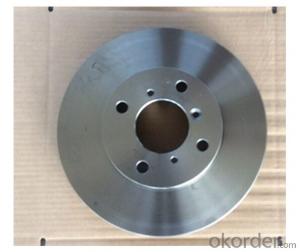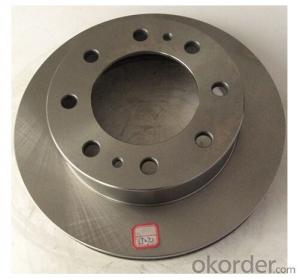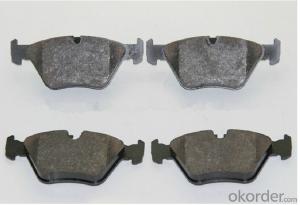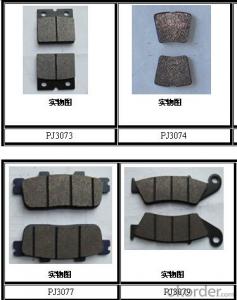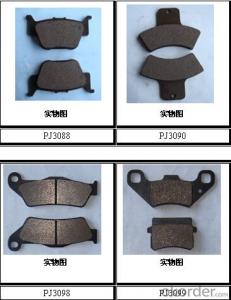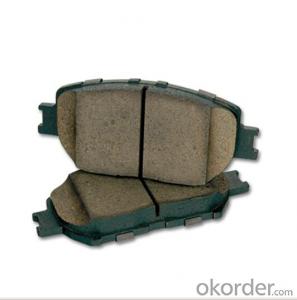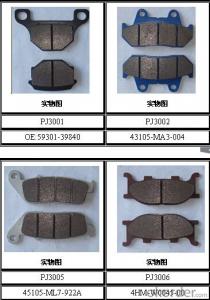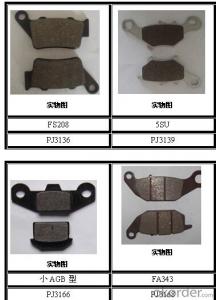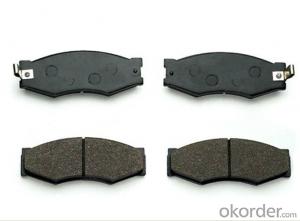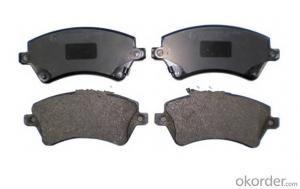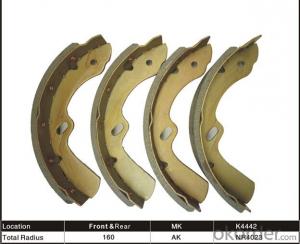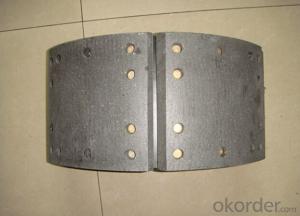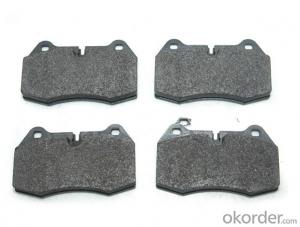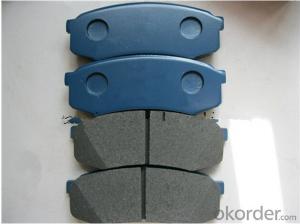100% Asbestos-Free Car Brake Pads for Toyota Prado
- Loading Port:
- Qingdao
- Payment Terms:
- TT OR LC
- Min Order Qty:
- 100 set
- Supply Capability:
- 50000 set/month
OKorder Service Pledge
OKorder Financial Service
You Might Also Like
Auto parts: | brake pads | Position: | Front Axle | PAGID: | C1004 |
VALEO: | 541679 | WVA: | 29108/29109/29163 | FMSI: | D1203-8323 |
FERODO: | FDB1313 | Rate: | EE&FF | Test: | Link &Greening Test |
Packaging & Delivery
Packaging Detail: | Neutral Packing, ANTEC Packing, Client's Packing. Corrugated Box,Wooden case,Pallet. |
Delivery Detail: | 30-45days |
Specifications
Brake pads
1)Asbestos, Non-asbestos, Semi-metallic, Nao, Ceramic, Carbon fiber 2)High noise abatement
3)Prompt delivery
Core Products:
We produce Asbestos, Non-asbestos, Semi-metallic, Nao, Ceramic, Carbon fiber brake pads .
Description:
Crossing Reference Number | Application | |||
FMSI | D1203-8323 | FERODO | FDB1313 | Scania
Benz
Man
Iveco
DAF |
WVA | 29087 | WVA | 29059 | |
WVA | 29106 | WVA | 29105 | |
WVA | 29062 | WVA | 29061 | |
WVA | 29060 | WVA | 29046 | |
WVA | 29045 | WVA | 29042 | |
WVA | 29202 | WVA | 29201 | |
WVA | 29179 | WVA | 29163 | |
WVA | 29109 | WVA | 29108 | |
O.E.M. | 0034201620 | O.E.M. | 0024204920 | |
O.E.M. | 082135100 | O.E.M. | 0044202220 | |
O.E.M. | 2992348 | O.E.M. | 1439324 | |
Features:
1.Shimmed, chamfered and slotted to be consistent with OE Design
2.Positive mold process
3.Ultra-quiet performance, low dusting
4.Rubberized multi-layer shims
5.Responsive braking and longer pad life
6.Sensor wires included on those vehicles with OE sensor wires
7.QS9000, IS09002 and TUV certified
Advantages:
1. Production experience: 15 years
2. Items' availability: 1800 models of brake pads, our R&D Department can develop 10 new items per month. Presently the models under production cover European and American Applications, Japanese and Korean Applications, and heavy-duty applications for truck, bus and engineering vehicles etc.
3. Formulation: Asbestos, Non-asbestos, Semi-metallic, Nao, Ceramic, Carbon fiber
4.OEM Accepted: We can produce any your design.
5.Guarantee: 30,000- 60,000kms
6.Warranty:If there is any quality problem, we will supply the same quantity goods with free charge to you.
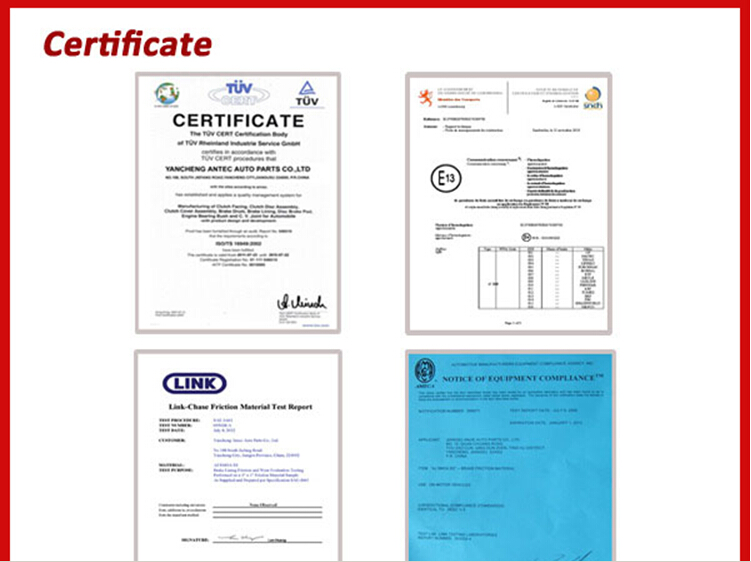
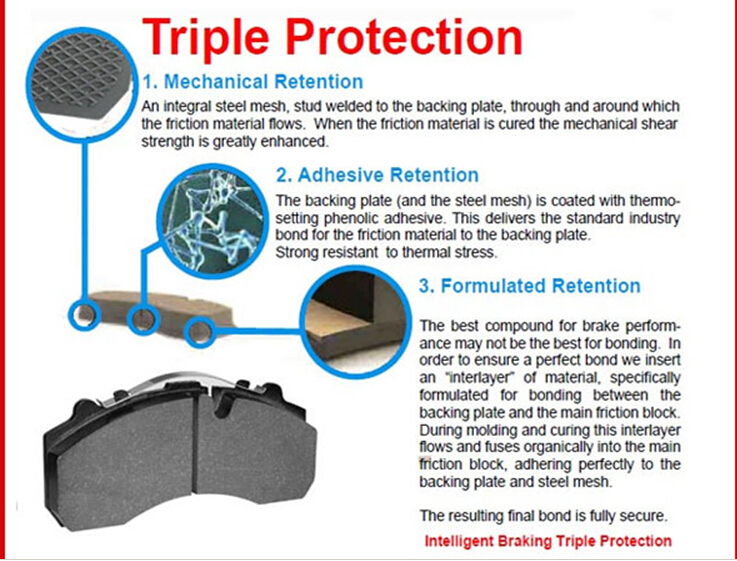
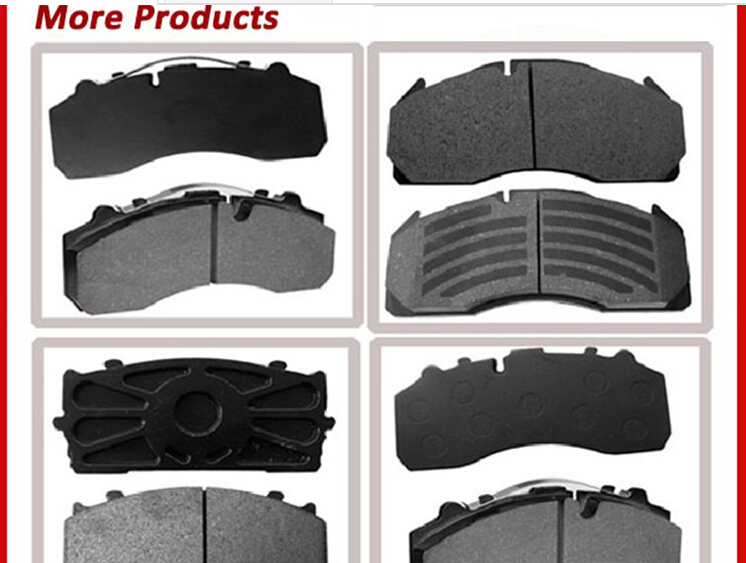
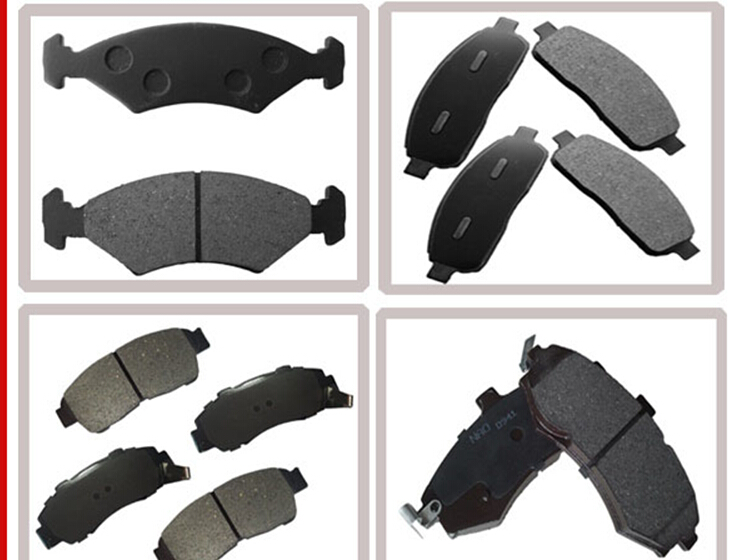
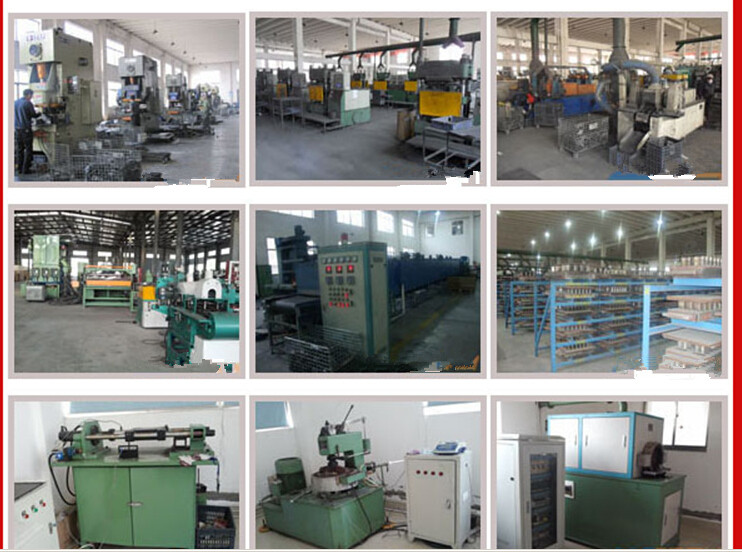
- Q: its a used 2004 Kawasaki ninja 250 and it looks like its in great shape. i have heard that is a great starter bike and the only reason i am buying it is to go to school and back. my wife takes the car to work so i need something cheap that will only take me to school. i am 20 years old. in Texas its required to take the class before getting your motorcycle license so im going to take it soon. can yall give me advice on the easiest and best ways to get better? i have very little experience. i am going to avoid highways for awhile till i get some experience.
- Congratulations - it sounds like you have done everything smartly so far (used bike, small bike, realizing you don't know it all). Take the safety course before you start riding! Don't know about Texas, but in some states you have some time (30 days or so) to get your license - IMO you should not leave your driveway until you've had the course. After that, the only way to get better is to ride. If you can, ride with experienced safe riders and watch how they behave. As you ride, learn to anticipate what drivers will do. Watch their faces - are they looking in your direction? Do they see you? Assume they don't and always have a backup plan. I always think, If that guy pulls out, what am I going to do? Gradually learn your motorcycle's capabilities, don't test the limits right away. How does it accelerate? How does it brake? How does it steer? Most beginner accidents happen because (1) the rider knows how to go fast but not how to stop, and (2) the rider does not anticipate problems and has not developed automatic responses.
- Q: Hi - I am 18 years old - and never rode a motorcycle before in my life (I have a car). I recently bought a Ninja 250. I signed up for the Motorcycle Basic Riding Course in 4 weeks. Until then, the motorcycle is just going to sit in the garage. Anyways, my question is will the Course tell me how to ride a bike, or do I have to experiment with my bike and learn by myself?
- First thing- if the bike is going to sit in the garage for a couple of weeks, add fuel stabilizer and get a battery tender float charger for the battery. Install both of these devises on the bike, then you will be good to go when you decide you want to venture out. If you decide you want to try to venture out before taking the course, learn the basics-how to pick up a downed motorcycle-there is a special technic that does not involve brawn to do it and saves your back. I know I had to 2X yesterday pick up my 800 pound bike on a steep downhill gravel and stone road. nothing sadder than seeing a bike that you are riding laying on its side with no help in sight. Next take the time to read the owners manual. Lots of pertinent info in there. Hardest thing for most beginners-mastering the clutch and throttle while holding the back brake on. You could practice that. Learn to put the motorcycle up on its center stand. Finally read all you can about riding and motorcycle clothing and helmets and gloves and boots and decide what you want and get it. you will need the DOT approved helmet, some form of jacket or long sleeve shirt and gloves, with long pants and boots or shoes that come up over the ankles in order to take the course.
- Q: I have a 1994 Suzuki Intruder 800. I bought it earlier this summer, probably should have gotten this done already but havn't. How much should I expect to pay for an oil change and also for front and rear brakes?
- For parts you can estimate around $20 for the oil and filter. Maybe around $90 to $150 for pads. Of course, those estimates vary depending on the price markup and the brand that is used for these parts. So, for parts you have, let's say; around $120. Most shops charge in the $50-$75/hour labor range. Let's go with something in the middle; $60/hour. The oil change will take about 1/2 hours ($30 labor). The pads shouldn't take much more than one hour ($60). So, add that up. $120 parts plus $90 labor gives up a bill of about $210. Both are pretty easy to do yourself. A few internet searches should provide you with some good helpful hints on doing the job yourself. Good luck. Ride safe.
- Q: When im on my motorcycle i was taught to brake before entering a turn, which is what ive always done. i was also taught that if you try to slow down in the middle of a turn, your rear wheel will slide out from under you and cause a slide (ive seen it happen to a student).are there any techniques i can use to overcome my fear of sliding and brake during a turn carefully?
- You can brake in a turn so long as you don't jam suddenly on the brakes. You have to brake moderately. The trick is to slow down enough into the turn that you won't have to brake hard once in the turn. The whole skill is to size up the corner as you enter, scrub off just enough speed and downshift a gear, or maybe two for a really sharp corner. So you don't need to brake hard while you're leaned over in the corner (but you can brake -some-). Then, as you come out of the corner, as you come back up to vertical you only have to release the clutch and open the throttle to speed smoothly away. The skill is in making this whole process -smooth- and automatic. The more twisty mountain roads you ride, the better you get at this.
- Q: only when riding slow,the rear brakes squeak along with the rotation speed of the tire.there is plenty of pad left.how can i stop it and what is causing it? the squeak goes away when i apply the brakes.
- My question is, has it always done this? Or just started? If it has come on gradually over a period of time, yes it could be crud on the pads. If so, one thing you can do is remove the pads, lay a piece or sandpaper on a flat surface and rub the pads until the finish looks clean or new. If it still does it, you might take the pads off and with a file, chamfer the edges, especially the leading edge of the pad (the side pointing to the rear of the bike). Sometimes this will help reduce the pad vibration.
- Q: Ok so its a 2000 Kawi zx6r with 2000 miles i live 2 and a half hours from the bike, so going to see it is a lil high on gas i drive a four door ram. Bike has 22k miles on it and its bone stock cept the exhaust. Guy bought it from a bike shop 3 years ago and has done nothing to it. It has never been dropped! But i need to change the oil, get new brake pads, and also get a new gas cap (broke key off in it) hes asking 2200 for it when the kelly blue book is 25-27ish. Is this bike worth it? This is also my first bike and i have all the cash, My gear head friends think its kinda bad deal. Help me out friends please i really really want a motorcycle
- Totally buy it bro. Motorcycles are totally rad, and the ZX6R is for sure a good choice.
- Q: DOWNSHIFT AND BRAKE IS RIGHT OR BRAKE AND DOWNSHIFT IS RIGHT-----IN A MOTORCYCLE?
- I do not use the engine to slow the bike. I use the brakes. I only use the transmission to keep the engine in the proper RPM range for what I am doing at the time. For one thing. It is easy to downshift while going too fast and lock the rear tire. You could easily lose control. You have a lot more control using the brakes alone to slow. Also. What is more expensive to repair? Overhauling the clutch and transmission. Or replacing a couple of brake pads. I would prefer to replace a couple of brake pads than overhaul a clutch or transmission.
- Q: other than to do a stoppie, it seems pointless. but I‘ve never been a hardcore biker.
- No, the rear brake is NOT the primary brake on a motorcycle (or a car for that matter). The FRONT brake does MOST of the braking on a bike, especially a sport bike where all of the braking will be once weight transfer unweights the rear of the bike. Rear brakes on bikes are relatively weak to keep you from skidding the rear tire. You should use BOTH brakes in proportion to your need to stop. Initially using more rear and progressively adding more front brake in and easing off the rear brake as yours and the bike's weight shifts to the front wheel. You modulate the brakes to keep the wheels from skidding. Maximum braking force is applied when you reach that point just before the front wheel starts to skid.
- Q: I am brand new to motorcycles and am teaching myself how to simply start and stop while i wait for my MSF class. I notice whenever i brake and come to a complete stop in first, the bike stalls. I then have to turn it back on, find neutral, and start it. Do i need to have the clutch pulled in when i stop? The bike works fine other than this, i get the feeling im probably not doing something right.
- The bike is working fine, you need to pull the clutch in when you are going to stop.
Send your message to us
100% Asbestos-Free Car Brake Pads for Toyota Prado
- Loading Port:
- Qingdao
- Payment Terms:
- TT OR LC
- Min Order Qty:
- 100 set
- Supply Capability:
- 50000 set/month
OKorder Service Pledge
OKorder Financial Service
Similar products
Hot products
Hot Searches
Related keywords
